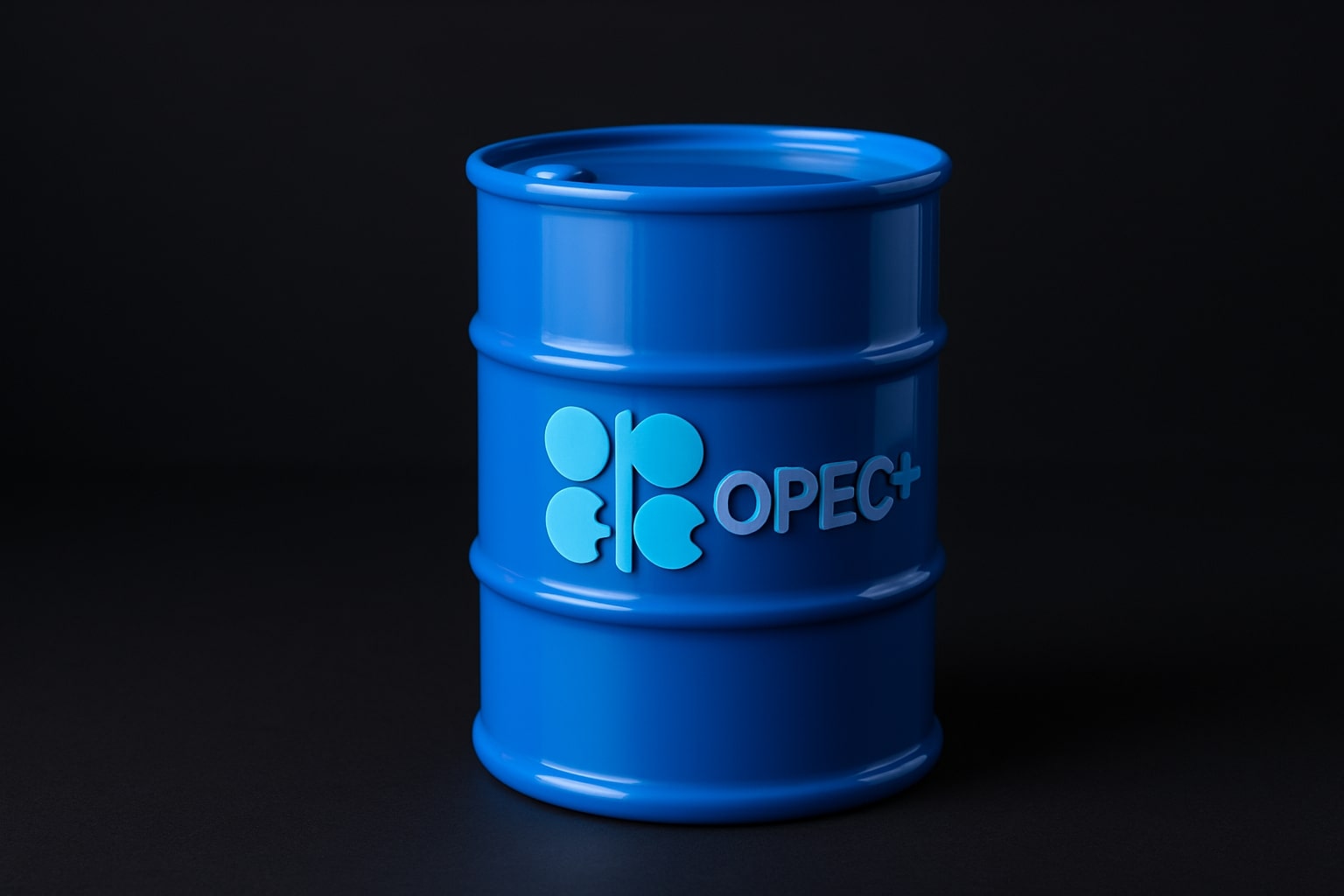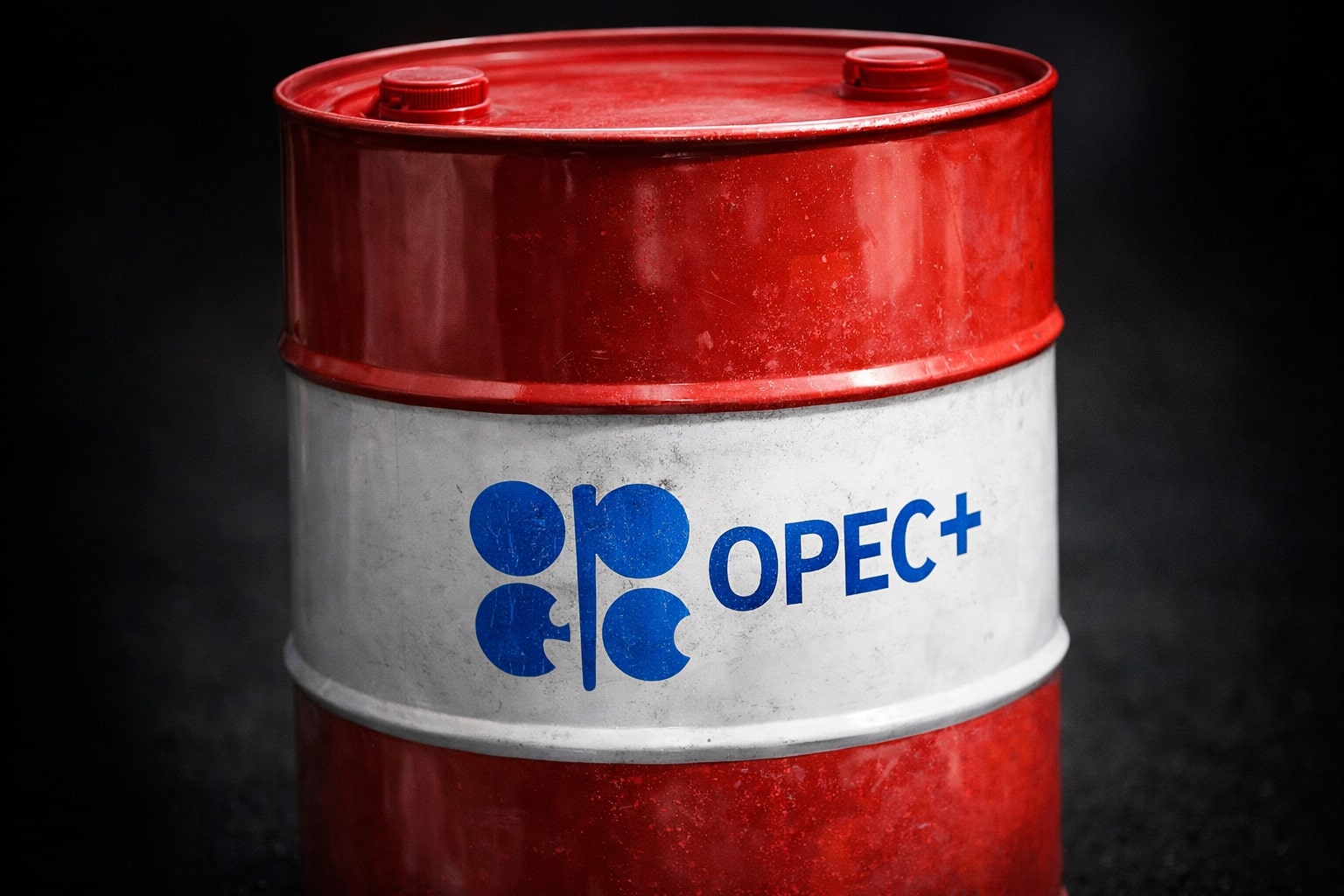
Oil Price Forecast: WTI and Brent Slide as OPEC+ Output Hike Meets Recession Fears
WTI at $61.87 and Brent at $65.50 test key support as OPEC+ supply, weak U.S. jobs data, and Fed rate cut bets fuel bearish oil momentum | That's TradingNEWS
WTI and Brent Under Pressure as OPEC+ Shifts Strategy
The crude market has entered September with a decisive downturn. WTI (CL=F) slid to $61.87 per barrel, down 2.54%, while Brent (BZ=F) closed at $65.50, losing 2.22%. These levels mark a 12% decline year-to-date and bring both benchmarks dangerously close to technical thresholds that traders see as pivotal for the next major move. The catalyst this time is OPEC+, with Saudi Arabia and its V8 allies signaling additional production increases of 137,000 barrels per day starting next month, potentially lifting supply by as much as 1.65 million bpd over the coming quarters. The decision was unexpected; only a week ago, analysts projected output stability. Instead, OPEC+ is pursuing market share even at the expense of price stability.
OPEC+ Output Increase Raises Downside Risk
The message from Riyadh and Moscow is clear: short-term revenues are being sacrificed to weaken competitors and capture demand. Russia, facing heavy sanctions and tariffs from the U.S., has little choice but to monetize volumes even at discounted prices, while Saudi Arabia can lean on its low-cost production to endure prices closer to $60. This aggressive positioning has already pushed traders to reprice Brent toward $65 support. Should it break, technical projections point to a slide toward $60, mirroring the anticipated range outlined by the U.S. Energy Information Administration, which now sees Brent averaging $58 in Q4 2025. For WTI, the likely band is $58–$63, and a breach below $58 would trigger stop-driven selling.
Macroeconomic Weakness Adds to Oil Market Strain
The production story collides with fragile demand data. U.S. labor market figures show nonfarm payrolls grew only 22,000 in August, far below the 75,000 expected, while unemployment jumped to 4.3%, the highest in years. At the same time, continuing claims increased, leaving 7.4 million unemployed—already exceeding job openings at 7.2 million. Oil prices have historically tracked labor data closely because energy demand reflects industrial momentum. With consumer spending dampened by high services inflation—the ISM services price index hit 69.2%—oil traders are forced to price in recession risks alongside oversupply.
Technical Breakdown Suggests More Selling
Charts for both WTI (CL=F) and Brent (BZ=F) reinforce the bearish fundamentals. WTI has broken down from a symmetrical triangle that defined much of 2024 and early 2025, now trending decisively lower through the $61 zone. A break beneath $60 would confirm a longer-term downtrend and could accelerate losses toward $55, where the next support cluster resides. Brent’s structure is equally weak, trading consistently under the 50-day SMA with long upper shadows rejecting every test above $69.50. Momentum indicators, including RSI below 50, point to sustained selling pressure. Without a bullish reversal candle, such as a bullish engulfing or three white soldiers pattern, rallies will be sold into.
Geopolitics and Tariffs Shape Demand Outlook
President Trump’s trade policy has added another layer of volatility. Tariffs on India for Russian crude purchases put additional pressure on Asian importers to diversify away from Moscow, but it also raises landed costs at a time when consumption is slowing. European buyers remain divided, with Hungary and Slovakia still sourcing Russian oil, limiting the effect of U.S. sanctions. Meanwhile, Ukraine’s drone strikes on Russian refineries show that supply disruptions can flare unpredictably, but so far the net effect has been outweighed by OPEC+ production increases. China and India continue to secure cheap barrels, reducing the urgency to buy at higher global benchmarks, capping Brent’s upside.
Kolibri Energy Stands Out Amid Weak Pricing
The collapse in crude benchmarks is not uniform in its impact. Kolibri Global Energy (NASDAQ:KGEI) is demonstrating resilience even as market prices fall. The company reported Q2 2025 production of 3,220 boepd, up 3% year-over-year despite temporary shutdowns, and is guiding for a 24–32% surge in output during H2 2025 as nine new wells come online. Even with realized prices of just $47.06 per barrel, well below the WTI average of $63.63, Kolibri’s adjusted EBITDA reached $7.68 million for the quarter. Operating costs fell to $7.15/boe, down 16% from the prior year, showing scale efficiencies at work. At current forward production rates, EBITDA could hit $20 million in H2, giving Kolibri a forward EV/EBITDA multiple of 5.44, more attractive than the industry median of 5.99. Insider confidence is notable, with buybacks executed at $6.42 per share, well above the current $5.23 market price, signaling management’s belief in undervaluation.
Read More
-
AbbVie Stock Price Forecast - ABBV at $229 Turns the Humira Cliff Into a 2026 Growth Engine
02.01.2026 · TradingNEWS ArchiveStocks
-
XRP Price Forecast - XRP-USD Nears $2 as $1.80 Support and Shrinking Supply Point to $2.60 Target
02.01.2026 · TradingNEWS ArchiveCrypto
-
Oil Price Forecast - Oil Slide Into 2026: WTI Stuck at $57, Brent at $60
02.01.2026 · TradingNEWS ArchiveCommodities
-
Stock Market Today: Nasdaq Hits 23,467 as Nvidia (NVDA), Micron (MU) and Baidu (BIDU) Drive AI Surge
02.01.2026 · TradingNEWS ArchiveMarkets
-
GBP/USD Price Forecast: Pound Holds 1.3450 as Fed–BoE Split Keeps Bulls Aiming at 1.37
02.01.2026 · TradingNEWS ArchiveForex
Financial Stress and Fed’s Dilemma
Falling oil has macro feedback loops as well. Lower energy prices relieve some inflation pressure, giving the Federal Reserve room to cut rates. Futures now assign an 89% probability of a September cut, with some traders betting on 50 basis points. Yet financial cracks are emerging: Fed reserves have dropped below $3.2 trillion, credit conditions are tightening, and the Chicago Fed’s financial conditions index is signaling stress. Oil’s collapse is both a symptom and a trigger of these fragilities. If crude breaks $60 decisively, it may deepen the case for Fed easing, but also highlight global deflationary risks.
Buy, Sell, or Hold Verdict
The oil market has shifted from balance to oversupply narrative within weeks. WTI (CL=F) at $61.87 and Brent (BZ=F) at $65.50 are vulnerable to another 5–10% decline if OPEC+ barrels materialize and U.S. economic weakness persists. Technicals, fundamentals, and macro all point to bearish continuation. That makes crude a Sell at these levels until there is evidence of production restraint or demand recovery. For equities exposed to crude, integrated majors remain at risk, but niche producers like KGEI offer relative protection with efficient cost structures and insider conviction. The broader energy complex, however, will remain under pressure unless Brent stabilizes above $65 and WTI reclaims the $63–$65 zone.



















